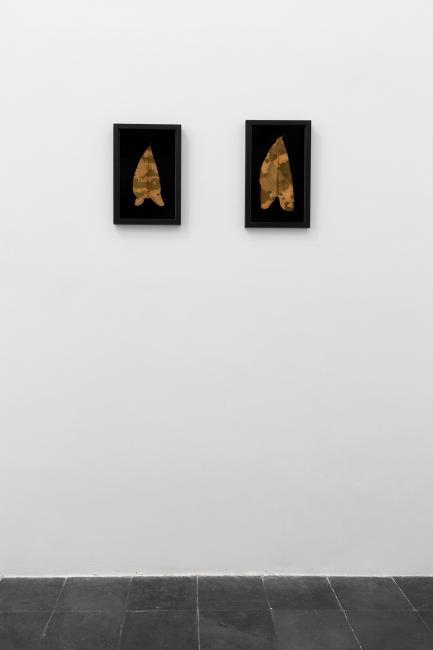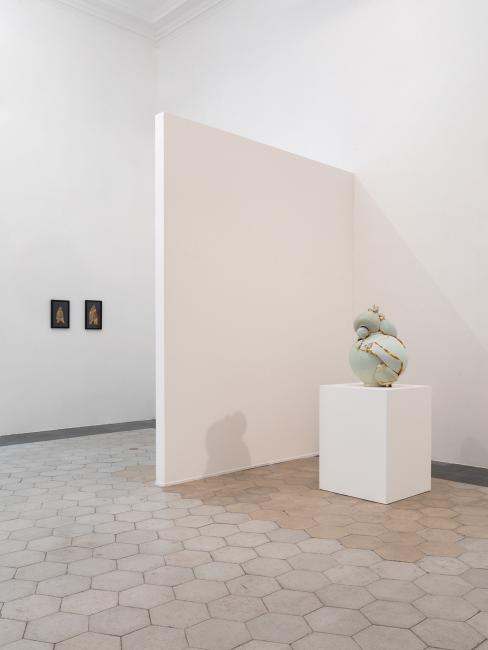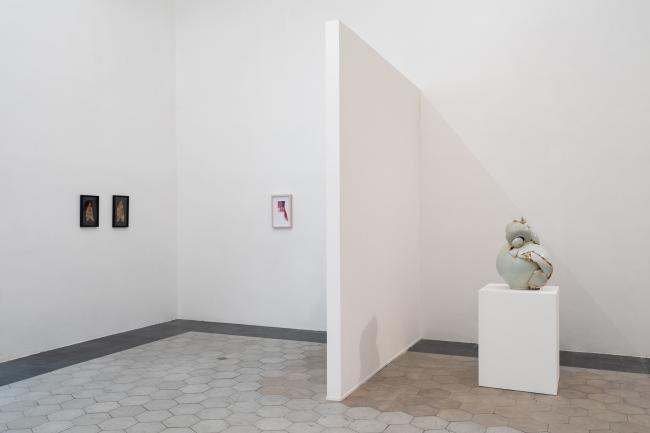
Binh DanhMilitary Foliage
Binh Danh’s photographs derive from the cycle of decay and regrowth in nature, and the faculties of memory and forgetting in the mind. He produces them through a technique he invented—the chlorophyll printing process—that uses photosynthesis in plants to generate chemical-free photographs. To create an image, Danh places a transparency on a leaf, sandwiches them between a solid surface and a sheet of glass, and exposes them to sunlight. He then lets nature work its magic for anywhere from a few hours to a few days. The images that result challenge viewers to reconsider the very concept of photography, and the ideas of identity, family, and memory the medium connotes.
The creation of new life through loss that underpins Danh’s technique also informs the meaning of his photographs. Danh is the child of war refugees displaced from Vietnam to California. Growing up in the 1980s, he developed an impression of his family’s homeland primarily through movies, such as Apocalypse Now and Platoon, which feature impenetrable jungles as protagonists. Plants thus emerged as vehicles for Danh to address the trauma of the Vietnam War that transformed his family’s lives. In his 2010 series, Military Foliage, which encompasses the works in this exhibition, Danh creates chlorophyll prints of camouflage, an abstract image developed by artists during World War I to help soldiers hide in the landscape. In the digital age, hand-painted camouflage has been replaced by computer renderings of environments from ice fields to deserts. By printing a camouflage pattern on a single leaf, Danh hints at the individual lives impacted by war, and the regeneration of life in nature regardless of human fallibility. (ER)
About the artist
Born in 1977 in Vietnam, Binh Danh emigrated to the United States with his parents in 1979. He received a BFA from San José State University and an MFA in studio art from Stanford University. His work addresses the collective memory of war, particularly the Vietnam War, as well as his own family history and generational memory. Danh invented a technique he calls the chlorophyll printing process, in which monochrome images appear embedded in leaves through the organic process of photosynthesis. Recent solo exhibitions were staged at the Louisiana State Museum in New Orleans (2018), the Phillips Museum of Art at Franklin and Marshall College (2018), and the Memorial Art Gallery in Rochester, New York (2016). His work can be found in the permanent collections of the National Gallery of Art, the DeYoung Museum, the Philadelphia Museum of Art, the San Francisco Museum of Modern Art, and others. Danh lives and works in San Jose and teaches photography at San José State University. He is represented by Haines Gallery in San Francisco and Lisa Sette Gallery in Phoenix.





